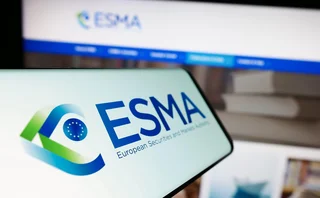
Forex options software boosts exotics appetite, say bankers
The use of independent foreign exchange options pricing software by corporates may have narrowed banks' margins, but it has given a substantial boost to the exotics market, bankers told RiskNews sister publication FX Week .
Corporates represent a growing client base for FX options pricing software vendors, as companies prepare for changes to international accounting standards next year that require them to mark derivatives positions to market on a regular basis. These prices must be independent, precluding the use of free software from banks.
The heightened price transparency this brings has resulted in reduced margins for banks, but it also offers an opportunity to enhance their business, said Sammann. "If banks treat this as a threat then they will suffer," he said. "This is an opportunity to improve customer service by delivering increasingly sophisticated bespoke solutions to meet our clients' needs."
Price transparency has already increased over the past few years as a result of the distribution of free software and e-commerce, said Sara Sullivan, senior manager in FX options sales at ANZ Bank in London. "But banks are not just there to give prices, they also add value in terms of understanding the FX markets."
Corporate clients are not able to devote the same level of resources to monitoring the market, so it is up to banks to advise their clients of how movements can affect their portfolio, she added.
The changes have ultimately been beneficial for banks, as corporates are more comfortable using options, said CAI's Sammann. This has led to a natural shift towards greater customer service and a requirement for sales staff to have a better understanding of derivatives across asset classes, he said.
It was feared that some corporations would reduce their level of options trading as a result of the impending accounting changes, but this has not occurred, said officials. "Many clients have been reviewing their treasury policy, in anticipation of the introduction of IAS 39, so they may have suspended new work, but none have stopped," said ANZ's Sullivan.
Scaling back occurred following the introduction of FAS 133 for US corporations in June 2000, said Drew Gross, head of corporate sales at BNP Paribas in New York. This has changed significantly in the past year, however, as significant moves in the dollar have shown corporate clients that using forwards alone does not provide the same level of protection from currency moves as using options.
Only users who have a paid subscription or are part of a corporate subscription are able to print or copy content.
To access these options, along with all other subscription benefits, please contact info@risk.net or view our subscription options here: http://subscriptions.risk.net/subscribe
You are currently unable to print this content. Please contact info@risk.net to find out more.
You are currently unable to copy this content. Please contact info@risk.net to find out more.
Copyright Infopro Digital Limited. All rights reserved.
As outlined in our terms and conditions, https://www.infopro-digital.com/terms-and-conditions/subscriptions/ (point 2.4), printing is limited to a single copy.
If you would like to purchase additional rights please email info@risk.net
Copyright Infopro Digital Limited. All rights reserved.
You may share this content using our article tools. As outlined in our terms and conditions, https://www.infopro-digital.com/terms-and-conditions/subscriptions/ (clause 2.4), an Authorised User may only make one copy of the materials for their own personal use. You must also comply with the restrictions in clause 2.5.
If you would like to purchase additional rights please email info@risk.net
More on Regulation
Hong Kong derivatives regime could drive more offshore booking
Industry warns new capital requirements for securities firms are higher than other jurisdictions
Will Iosco’s guidance solve pre-hedging puzzle?
Buy-siders doubt consent requirement will remove long-standing concerns
Responsible AI is about payoffs as much as principles
How one firm cut loan processing times and improved fraud detection without compromising on governance
Could one-off loan losses at US regional banks become systemic?
Investors bet Zions, Western Alliance are isolated problems, but credit risk managers are nervous
SEC poised to approve expansion of CME-FICC cross-margining
Agency’s new division heads moving swiftly on applications related to US Treasury clearing
ECB bank supervisors want top-down stress test that bites
Proposal would simplify capital structure with something similar to US stress capital buffer
Clearing houses warn Esma margin rules will stifle innovation
Changes in model confidence levels could still trip supervisory threshold even after relaxation in final RTS
BlackRock, Citadel Securities, Nasdaq mull tokenised equities’ impact on regulations
An SEC panel recently debated the ramifications of a future with tokenised equities







